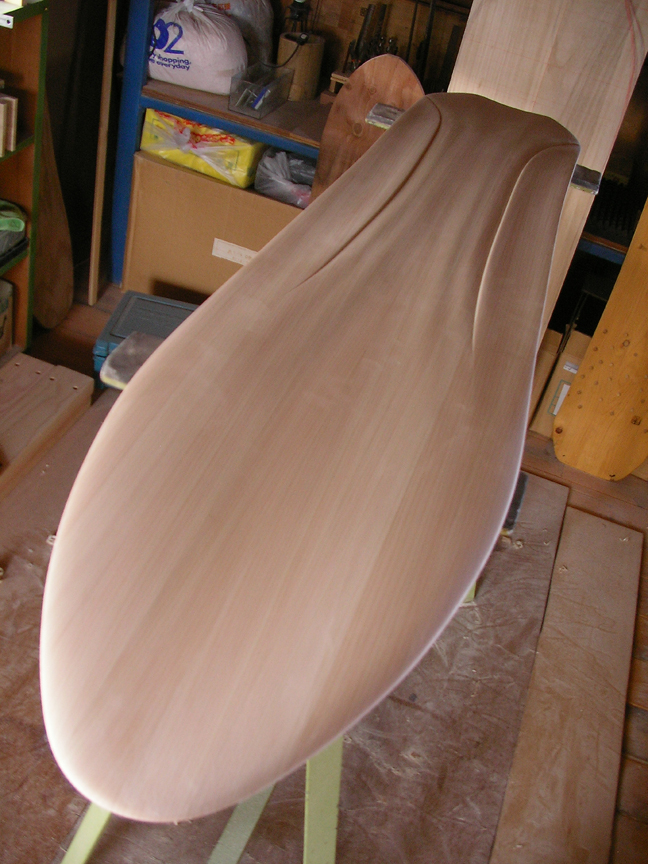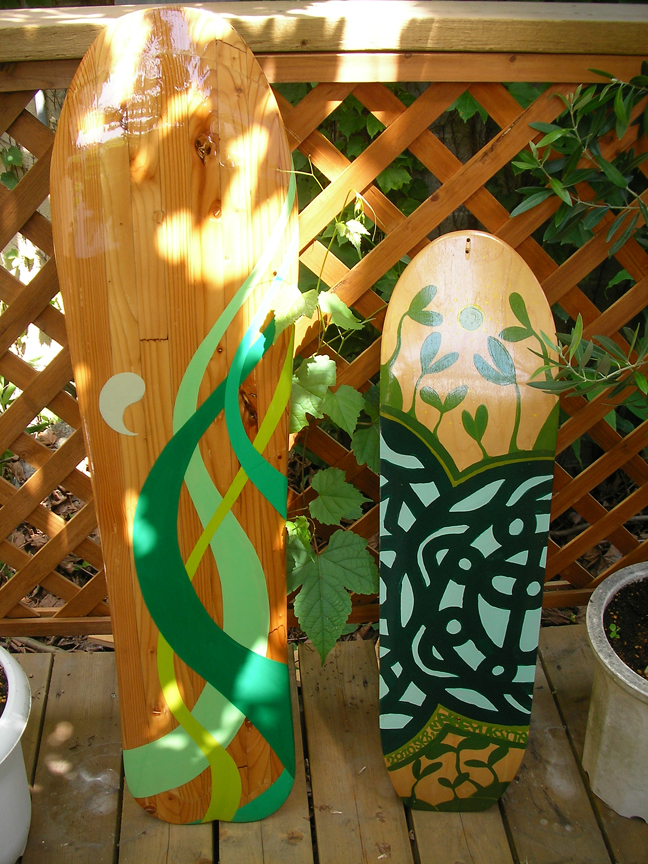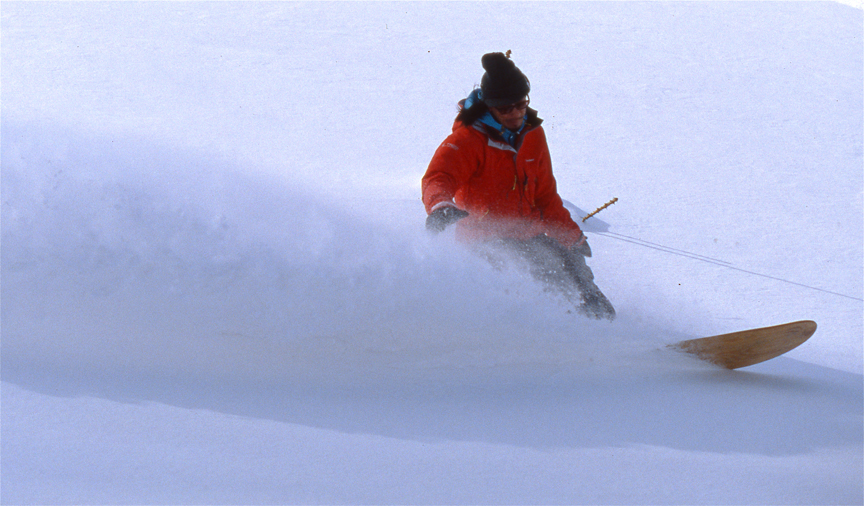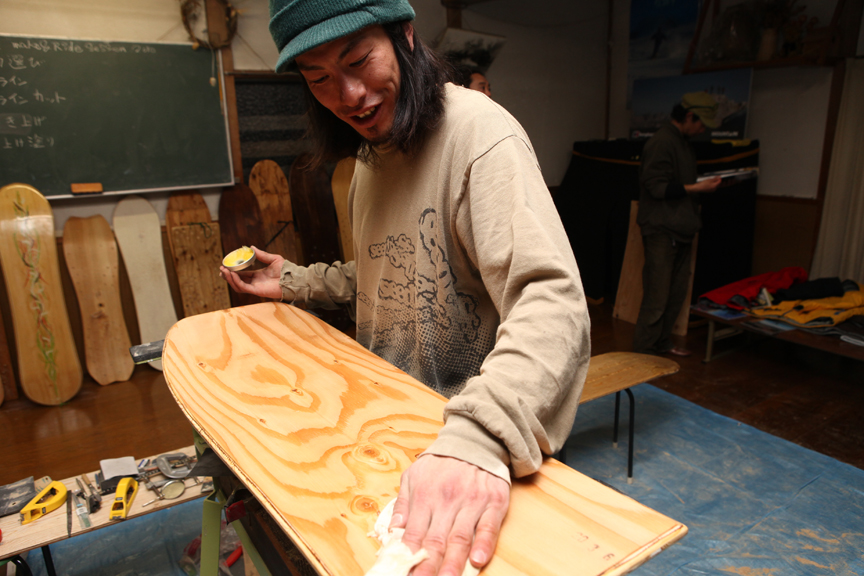Born and raised in Nagano, Atsushi Gomyo is no stranger to the mountains. He began snowboarding when he was 10 and climbed the professional snowboarding ladder in his early teens. In his 20s, he began riding for Gentemstick, the legendary powder board maker from Hokkaido.

Exploring different ways to experience and enjoy powder has been his passion, so when a new contraption called a snow deck came on the scene nearly 20 years ago, combining snowboarding, surfing and skateboarding, Gomyo jumped right on.
“It was easy to turn, fun and fast—like skateboarding on snow,” he remembers after trying Burton’s Junkyard.
“But it was primarily built for the piste.”
Around the same time, a friend brought out a piece of shaped wood Gomyo had tested on the powder. It was like nothing he’d ever ridden before. Unlike the snow decks, this wooden board was surprisingly good on powder yet was also enjoyable in other conditions.
He expected someone would eventually start producing a similar board, but when nothing appeared in Japan, he took the initiative and spent countless hours perfecting his signature “yuki-ita,” a no-edge, no-binding snowboard that literally translates to “snow board.”
Freeriding
The motivation for creating a new line of boards came from wanting to express a new and natural way to enjoy the snow. Yuki-ita reminded him of fond memories sledding as a child. Developing his boards took three-to-four years, although he continues to fine tune them today.
“The most challenging part is determining the shape of the board. I have to think about what kind of terrain it would be ridden in before and while shaping. I have eight board shapes now,” he says.

For powder, he recommends boards 120 to 150 centimeters long, and for parks and late season, shorter boards 90 centimeters long with channels and grooved fin-like layers on the tail.
Riding binding-less may be freeing, but it’s also tricky as every minute movement or weight shift affects your ride. But for Gomyo, that’s the beauty of it, as the yuki–ita improved his snowboarding skills.
“When you’re on a snowboard, you rely on your bindings and boots to turn and stabilize yourself. With the yuki–ita, you have only your balance to rely on. It really builds up your perception of balance and helps you be a better snowboarder,” he said.
Riding binding-free boards may seem intimidating, but Gomyo says anyone can ride a yuki–ita on a straight path. Turning can be difficult at first, but there’s a stabilizing leash cord that provides some support. Most importantly, he says is for people to have fun with the board.
“Rather than focusing on the technicalities, you have to ride the yuki-ita with the mindset of wanting to directly feel the powder and ride for pure enjoyment,” he said.

Grassroots
“I’m inspired by the local community—the people I ride with and friends who I’ve known for a long time,” he adds.
This season, Gomyo and his snowboard friends launched a snowboard line called PRANA PUNKS snowboarding, which uses locally sourced wood for the board core. Gomyo recently partnered with KEEN to become a brand ambassador and holds yuki-ita board shaping workshops at resorts around Japan where locals can test ride their new boards as well as try out KEEN’s Winterport boots.
“The boots grip well, and the soles are soft and easy to walk around in when riding,” says Gomyo. As for the future of yuki-ita, Gomyo is determined to continue using locally sourced materials and raising awareness of forest conservation while sharing the versatile yuki-ita with the rest of the world. Check out more about his boards here.





